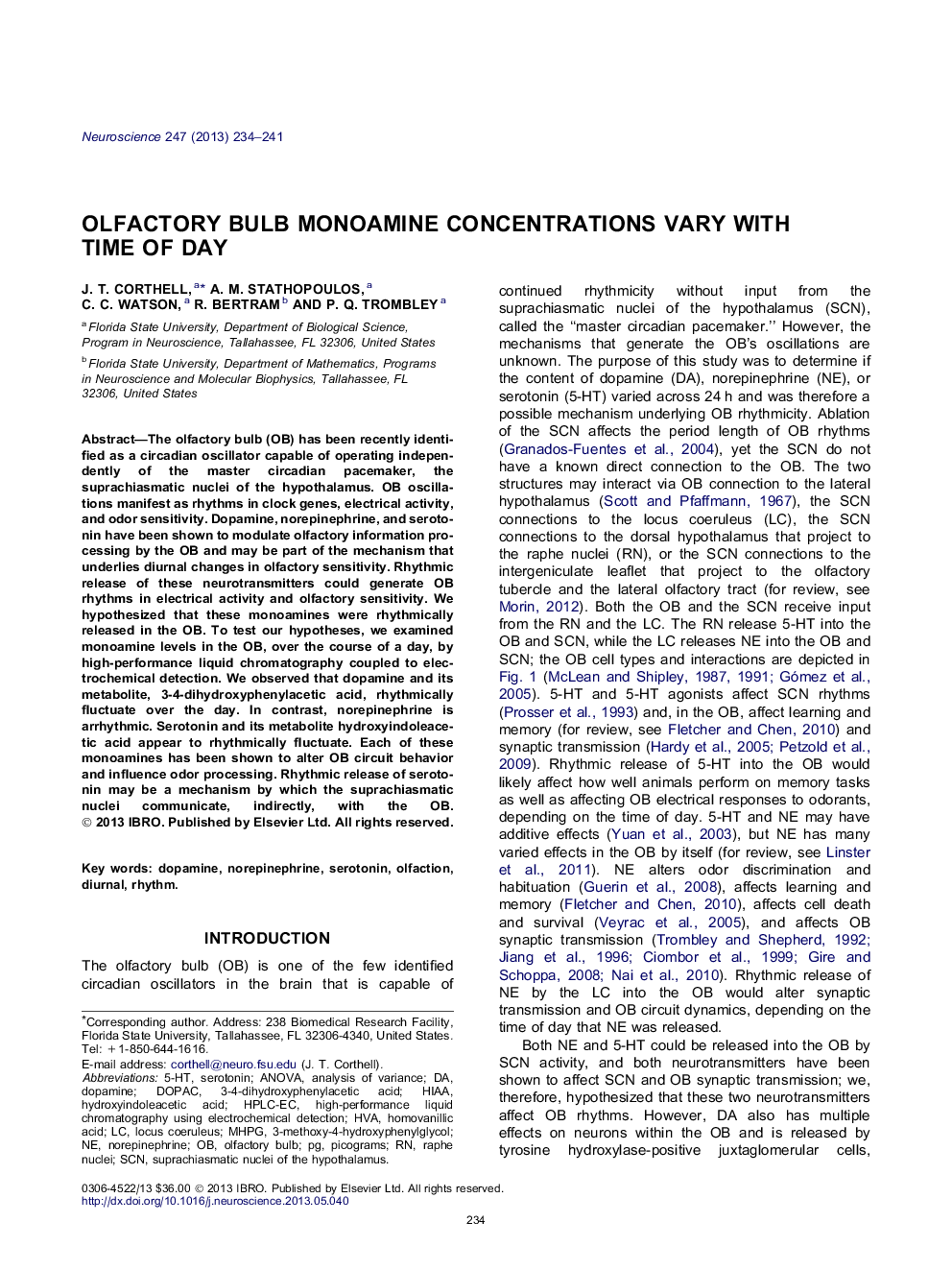| Article ID | Journal | Published Year | Pages | File Type |
|---|---|---|---|---|
| 6274852 | Neuroscience | 2013 | 8 Pages |
Abstract
The olfactory bulb (OB) has been recently identified as a circadian oscillator capable of operating independently of the master circadian pacemaker, the suprachiasmatic nuclei of the hypothalamus. OB oscillations manifest as rhythms in clock genes, electrical activity, and odor sensitivity. Dopamine, norepinephrine, and serotonin have been shown to modulate olfactory information processing by the OB and may be part of the mechanism that underlies diurnal changes in olfactory sensitivity. Rhythmic release of these neurotransmitters could generate OB rhythms in electrical activity and olfactory sensitivity. We hypothesized that these monoamines were rhythmically released in the OB. To test our hypotheses, we examined monoamine levels in the OB, over the course of a day, by high-performance liquid chromatography coupled to electrochemical detection. We observed that dopamine and its metabolite, 3-4-dihydroxyphenylacetic acid, rhythmically fluctuate over the day. In contrast, norepinephrine is arrhythmic. Serotonin and its metabolite hydroxyindoleacetic acid appear to rhythmically fluctuate. Each of these monoamines has been shown to alter OB circuit behavior and influence odor processing. Rhythmic release of serotonin may be a mechanism by which the suprachiasmatic nuclei communicate, indirectly, with the OB.
Keywords
Related Topics
Life Sciences
Neuroscience
Neuroscience (General)
Authors
J.T. Corthell, A.M. Stathopoulos, C.C. Watson, R. Bertram, P.Q. Trombley,
